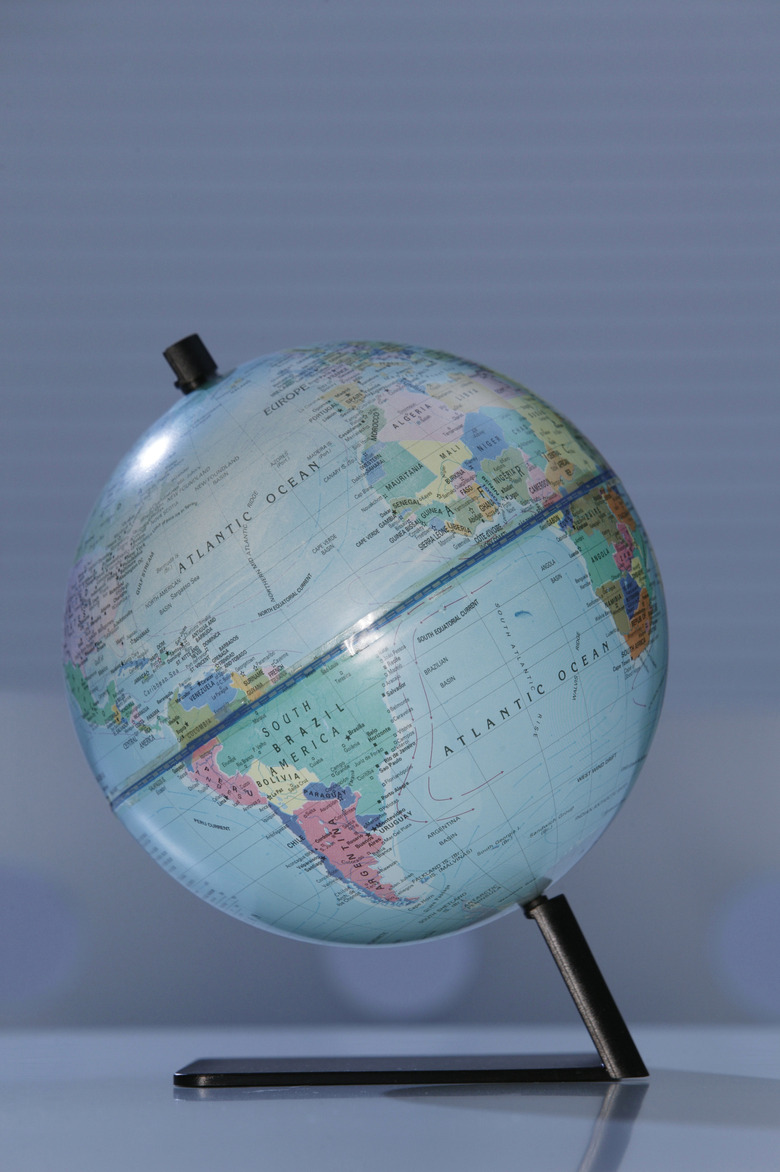How Can Earth's Rotation & Tilt Affect Global Climate?
Named after Milutin Milankovic, the mathematician who first described them, Milankovic Cycles are slow variations in the Earth's rotation and tilt. These cycles include changes in the shape of the Earth's orbit, as well as the angle and direction of the axis on which the Earth rotates. These variations occur slowly and regularly, causing cycles of change in the amount of solar radiation (heat) that reaches the Earth. Scientists believe these cycles may affect long-term weather patterns, or climate.
Eccentricity
Eccentricity
Eccentricity measures deviations in the Earth's elliptical (elongated) orbit from a symmetrical, circular orbit. If eccentricity is zero, an orbit is circular. As an orbit becomes more elliptical, its eccentricity gets closer to one. The two most important distances between the Earth and sun are described as perihelion, or the point in Earth's orbit when it's closest to the sun, and aphelion, or when its the farthest away. The difference between these distances is called eccentricity. The Earth's eccentricity varies from 0.0005 to 0.06, and the larger this number, the more solar radiation reaches the surface of the Earth. Eccentricity cycles last between 90,000 to 100,000 years.
Obliquity
Obliquity
The angle of the Earth's axis is referred to as its obliquity. If the obliquity of the Earth equaled zero (no tilt at all), the Earth would have no seasons because no variation in temperature would occur. During the winter, the Northern Hemisphere (where most of the Earth's landmass is) is tilted away from the sun, receiving solar radiation at more of an angle. This results in colder temperatures and more extreme temperature changes. During the summer, the landmass is tilted toward the sun, resulting in warmer temperatures and less extreme changes. The cycles of obliquity last 40,000 years and the tilt itself varies from 22 to 24.5 degrees.
Precession
Precession
Precession describes the slight wobble in the Earth's axis caused by the moon and other planets in the solar system. Precession cycles change the times of perihelion and aphelion, causing increases and decreases in seasonal contrast. When a hemisphere is oriented toward the sun at perihelion, extreme differences in seasons result, and this pattern is reversed in the opposite hemisphere. The Earth's axis wobbles in cycles that last 26,000 years.
Climate
Climate
The combined effects of the cycles of eccentricity, obliquity and precession cause changes in weather patterns on Earth. Earth is 5 million kilometers (3 million miles) farther away from the sun at aphelion than it is at perihelion. Currently, summer in the Northern Hemisphere occurs near aphelion, so differences in temperature are less extreme and the climate is mild. Sixteen thousand years ago, winter occurred in the Northern Hemisphere at aphelion, and there were extreme differences in temperature. Scientists believe that these differences may account for the movement of glaciers as they repeatedly advance and retreat across the continents, affecting the Earth's long-term climate cycles.
Cite This Article
MLA
Tides, Ocean. "How Can Earth's Rotation & Tilt Affect Global Climate?" sciencing.com, https://www.sciencing.com/can-earths-rotation-tilt-affect-global-climate-23082/. 24 April 2017.
APA
Tides, Ocean. (2017, April 24). How Can Earth's Rotation & Tilt Affect Global Climate?. sciencing.com. Retrieved from https://www.sciencing.com/can-earths-rotation-tilt-affect-global-climate-23082/
Chicago
Tides, Ocean. How Can Earth's Rotation & Tilt Affect Global Climate? last modified March 24, 2022. https://www.sciencing.com/can-earths-rotation-tilt-affect-global-climate-23082/
